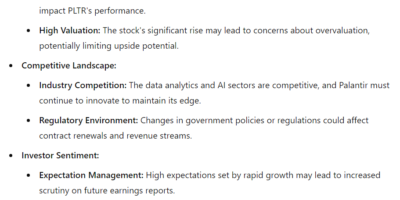Achieving a $1 trillion market capitalization has long been a prestigious milestone in the stock market, with many companies striving to reach this level.
Notably, technology-focused companies have dominated this space, with six of the seven companies that have reached the $1 trillion mark coming from the tech sector.
However, Warren Buffett’s Berkshire Hathaway (NYSE: BRK.A) has recently shifted the landscape by becoming the only non-tech company to achieve the $1 trillion milestone. With Berkshire Hathaway breaking the mold, two other stocks now show the potential to join their tech counterparts and reach a $1 trillion market capitalization by 2025.
Eli Lilly (NYSE: LLY)
Eli Lilly (NYSE: LLY), a pharmaceutical powerhouse, has experienced significant growth in recent years, driven by a robust pipeline of innovative drugs and strong market positioning. The company’s success is mainly due to its investments in research and development, particularly in areas such as diabetes, oncology, and neuroscience.
For instance, the diabetes drug Mounjaro (tripeptide) has emerged as a blockbuster with substantial sales growth, while Donanemab, a drug targeting Alzheimer’s disease, further boosts investor confidence.
Eli Lilly’s financial performance has been equally impressive. For the quarter ending June 2024, the company recorded revenue of $11.3 billion, a 35% increase year-over-year, while net income stood at $2.9 billion, surging 68% from the previous year.
Additionally, the aging global population and the increasing prevalence of chronic diseases have created a favorable market dynamic for the pharmaceutical giant. Overall, the demand for innovative drugs and treatments is rising, and Eli Lilly is well-positioned to capitalize on these trends.
As of press time, the company’s market cap is $854 billion, which puts it within striking distance of the $1 trillion mark. To reach this milestone, the capitalization would need to grow by a modest 17%. Currently, LLY is trading at $948, with year-to-date gains of 60%.
LLY YTD stock price chart. Source: Finbold
ExxonMobil (NYSE: XOM)
ExxonMobil (NYSE: XOM) also has the potential to achieve a $1 trillion market cap due to its ability to adapt to the evolving energy landscape. Its diversified portfolio, which includes upstream, downstream, and chemical segments, provides multiple revenue streams and a hedge against sector volatility.
Significant capital investments in high-growth areas like Guyana, the Permian Basin, and Brazilian offshore fields have driven ExxonMobil’s growth strategy. These investments are part of the company’s plan to significantly boost production levels, focusing on low-cost, high-return projects expected to drive revenue growth and strengthen its market position.
Additionally, ExxonMobil’s financial resilience will be crucial in its ascent to the trillion-dollar mark. For Q2 2024, the energy giant recorded a 12% year-over-year revenue growth, reaching $91.32 billion, while net income surged 17% to $9.2 billion.
The company’s strong balance sheet, commitment to maintaining a healthy dividend yield, and disciplined capital allocation have ensured financial stability even during low oil prices. These strategies provide ExxonMobil with the flexibility to support further growth initiatives. If oil prices remain favorable, the firm could see substantial earnings growth, further boosting its market cap.
As of press time, XOM’s market cap stands at $517 billion, so to attain a market cap of $1 trillion, the stock will need an upside of about 93%. By the last market close, XOM was trading at $116, gaining about 13% in 2024.
XOM YTD stock price chart. Source: Finbold
In summary, with these stocks exhibiting solid fundamentals, the prospects of reaching the $1 trillion market cap will depend on continued market growth and the overall economic trajectory. Investors should also remain vigilant of lingering recession fears.
Buy stocks now with eToro – trusted and advanced investment platform
Disclaimer: The content on this site should not be considered investment advice. Investing is speculative. When investing, your capital is at risk.
The post 2 non-tech stocks hit $1 trillion market cap in 2025 appeared first on Finbold.





